Background
The Satellite Applications Catapult and The Pew Charitable Trusts have collaborated to create Project Eyes on the Seas, a cutting-edge technology platform that combines satellite monitoring and imagery data with additional information, such as databases of fishing vessels and oceanographic data, to assist law enforcement in spotting suspicious fishing activity.
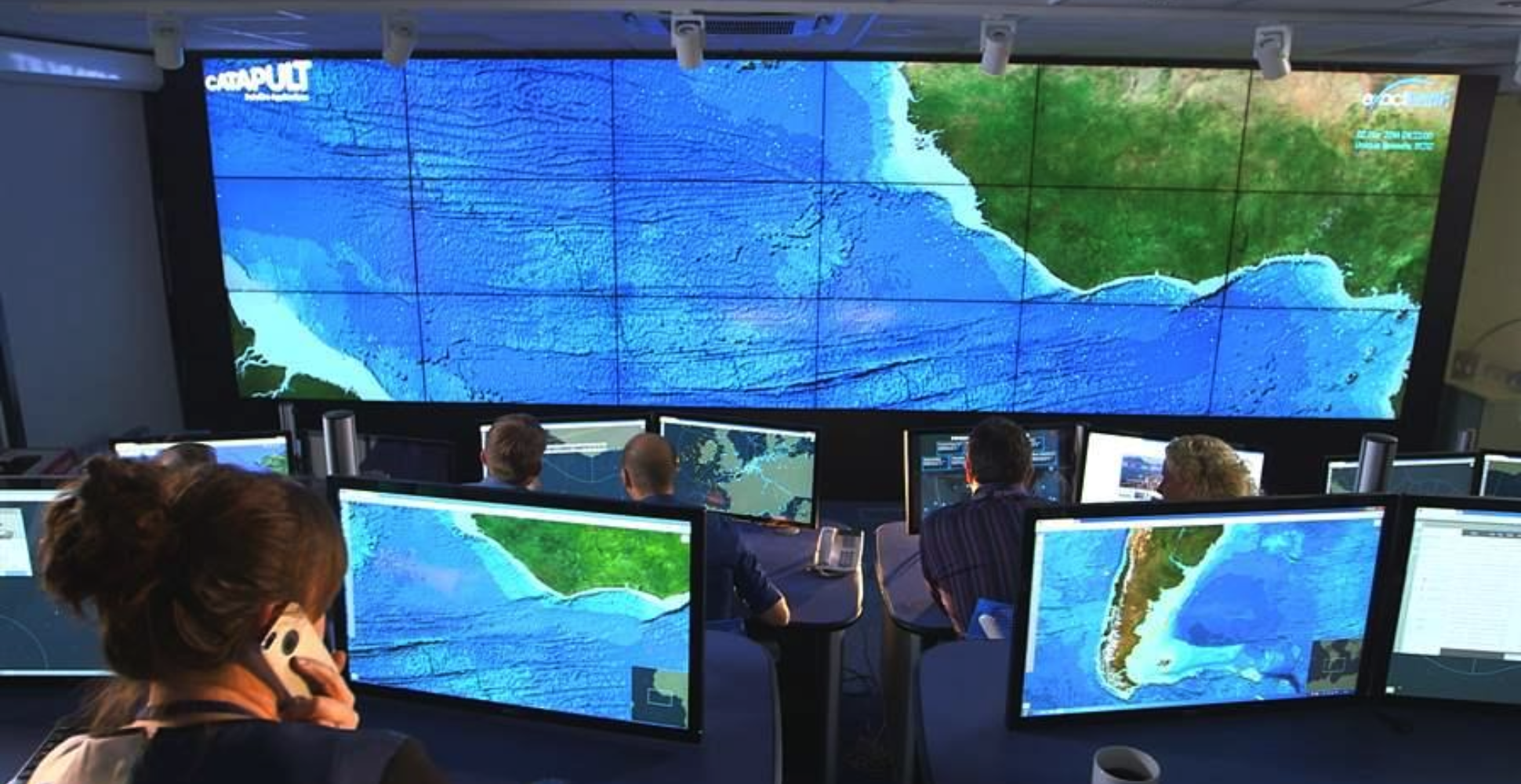
Problem
Globally, illegal fishing poses a threat to our seas, and the effects of overfishing on vital marine ecosystems. It threatens the livelihoods of tens of millions of people who depend on the resources of the oceans and accounts for 1 of every 5 fish taken from the world's oceans. Illegal fishing is estimated to be as expensive as $23.5 billion yearly.
Historically, patrol boats and helicopters have been used to stifle unlawful fishing. However, even the wealthiest countries frequently cannot afford them, and the ocean is too large for maritime monitoring and law enforcement to be effective on their own. A new strategy is needed to protect crucial marine areas, particularly the reserves that protect some of Earth's most pristine ecosystems.
Design sketching and exploration
The system had to incorporate four main sources of information and this was also factored into the UI’s functionality.
Vessel tracking
The technology makes use of Automatic Identification technology (AIS) data, which broadcasts a ship's identification, position, and other data to neighbouring ships, coastal tracking stations, and low-orbiting commercial satellites that offer AIS tracking internationally.
Satellite imagery
Satellites with SAR sensors circle the globe and produce images day or night, unaffected by weather. The system is also capable of incorporating optical satellite imagery, which provides higher-resolution images for smaller, targeted areas of ocean.
Vessel databases
A database containing records on a vessel’s country of registration, aliases, and known history of illegal or unreported fishing. In addition, the database includes information on vessel owners and operators and any links they may have to other vessels.
Automated analysis
Algorithms detect vessels’ movements and can spot patterns that indicate when boats are fishing or engaged in suspicious activity. The system can then alert authorities in a fraction of the time it would take a person to do the same analysis.
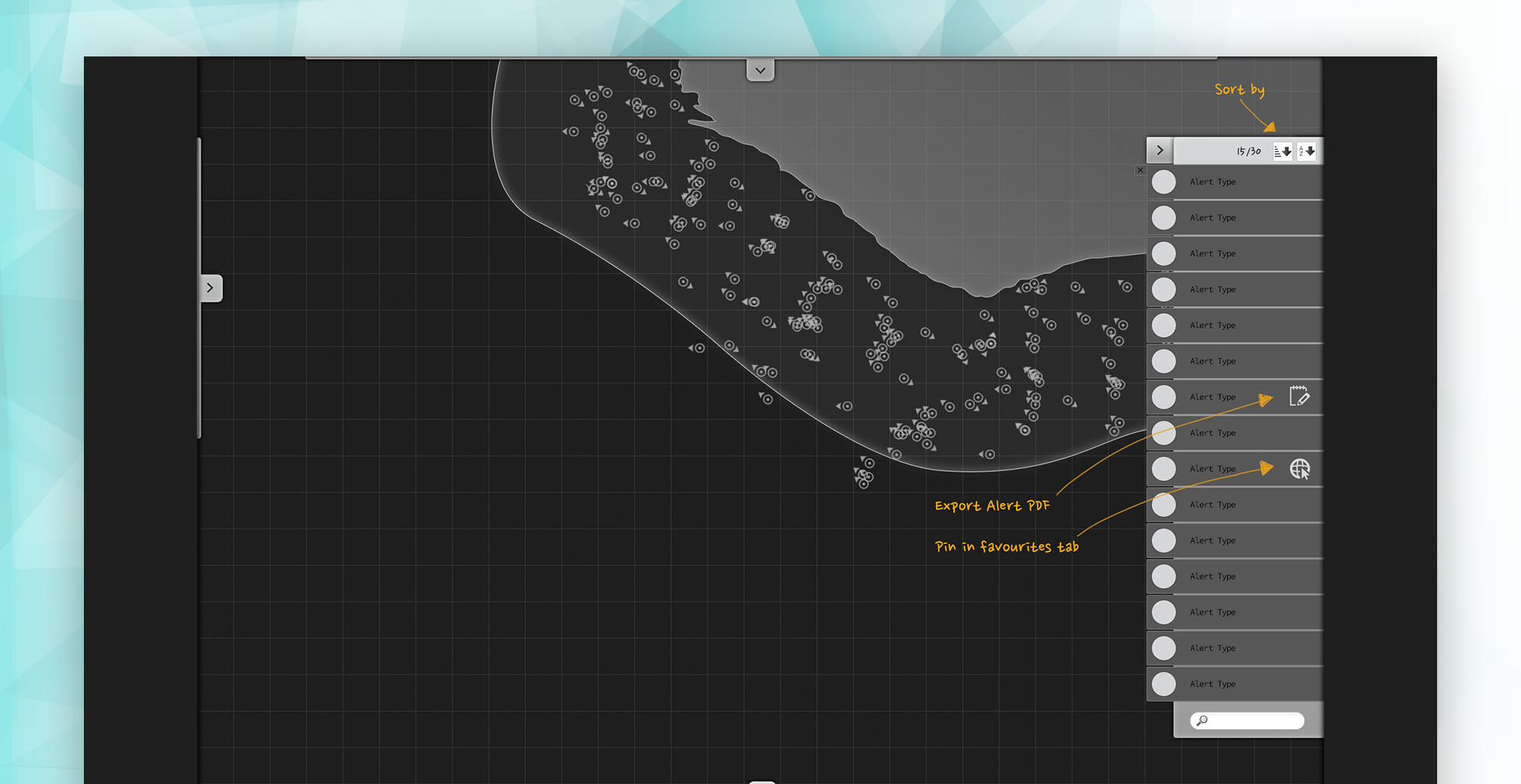
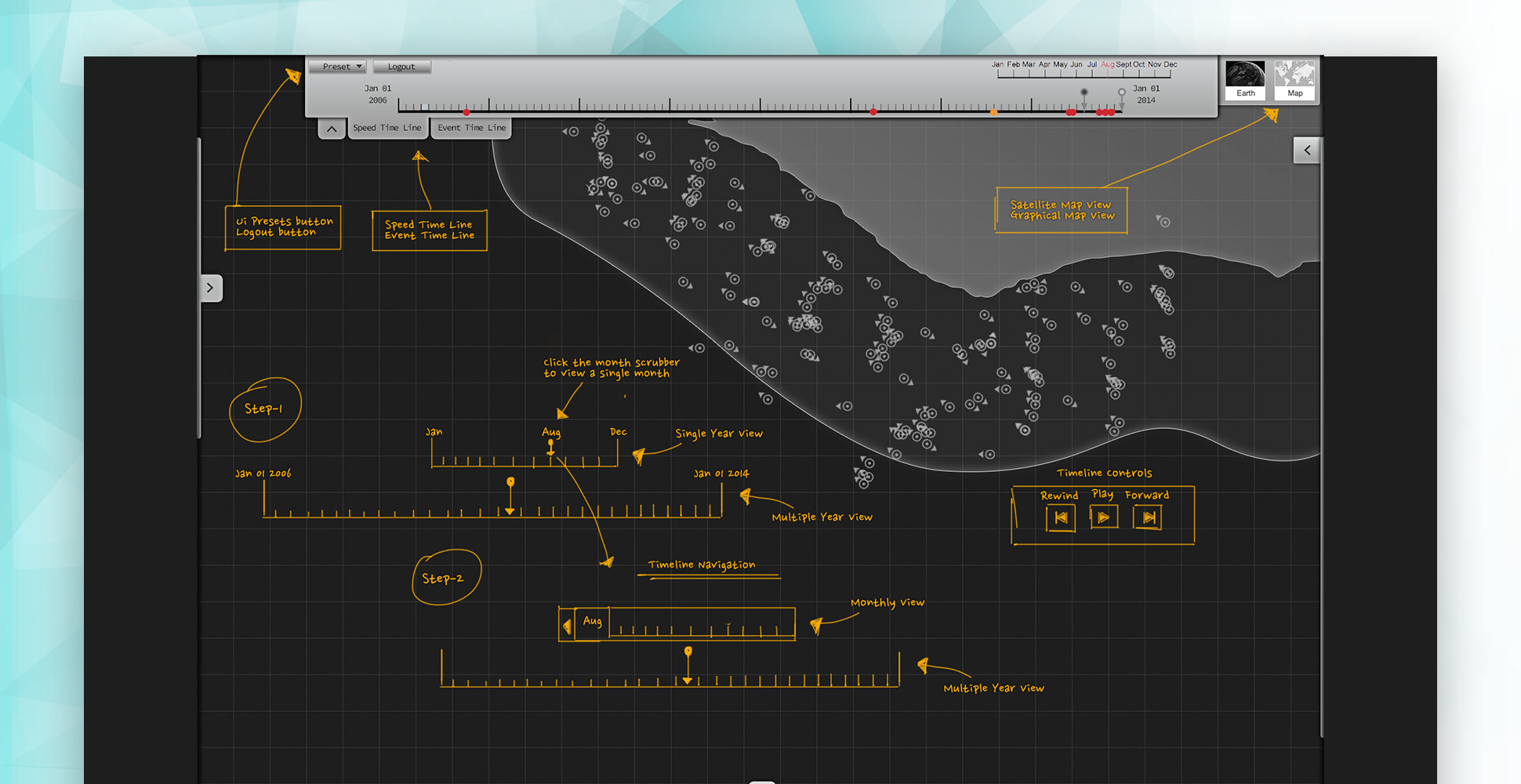
Ideation
The system can monitor and spot suspicious vessels all around the world by combining and analysing numerous layers of data almost instantly. The automated system then alerts the relevant authorities so they may look into it and take appropriate action. This key feature was extensively explores during the designing process.
Investigation dashboard design exploration
Each feature was meticulously designed which explanations to really help explain to stakeholders how the vessel would be tracked and more importantly what alert has been triggered.
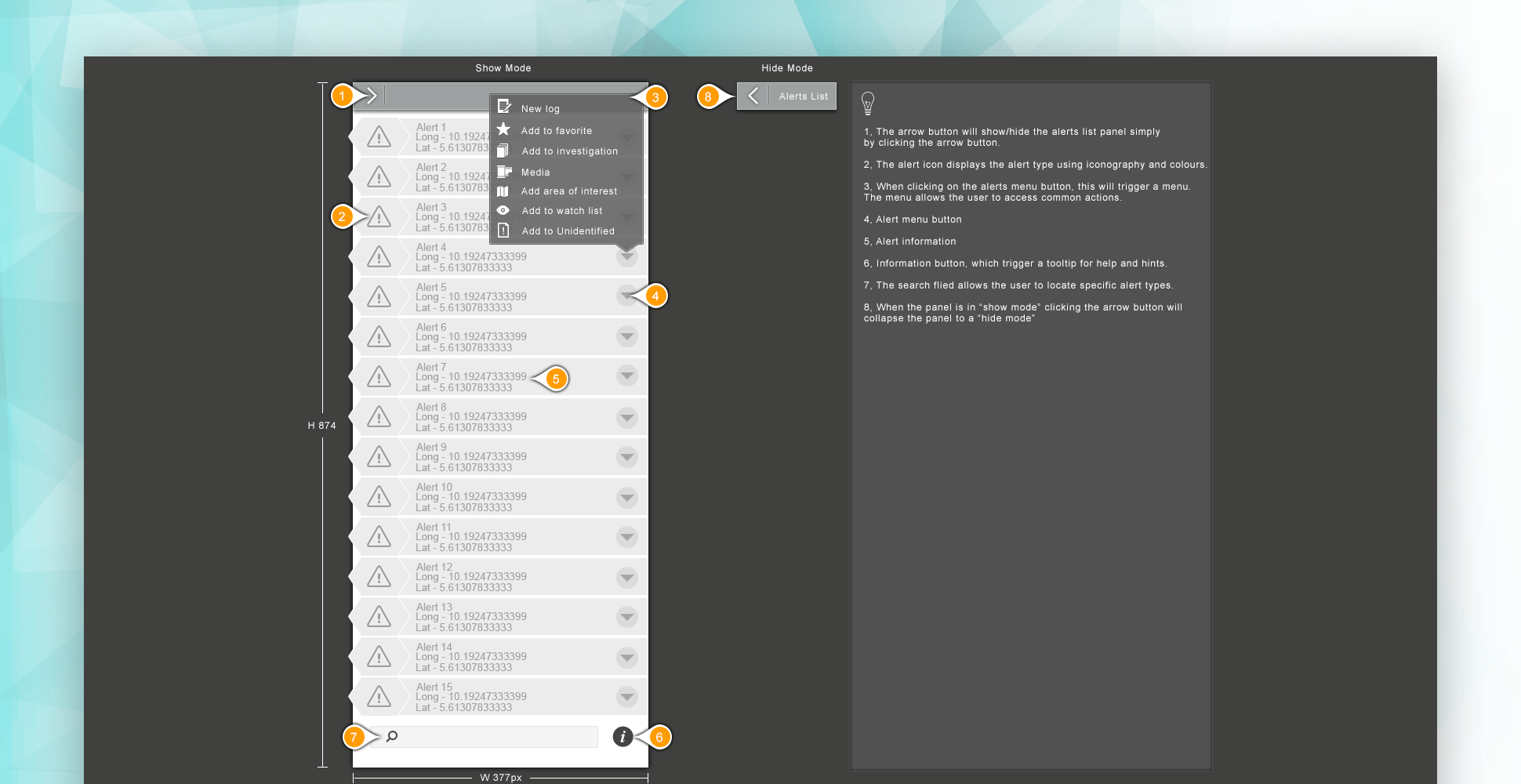
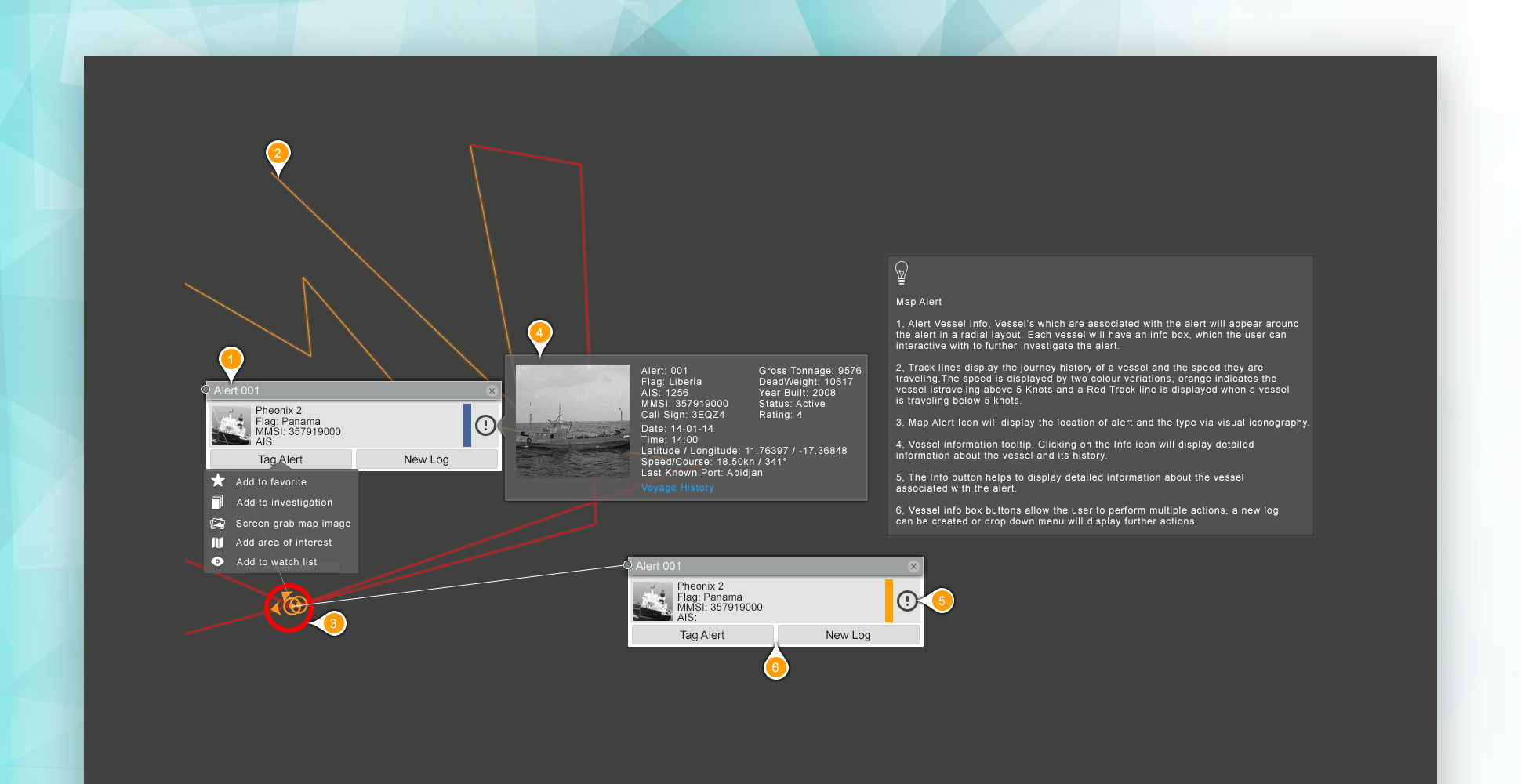
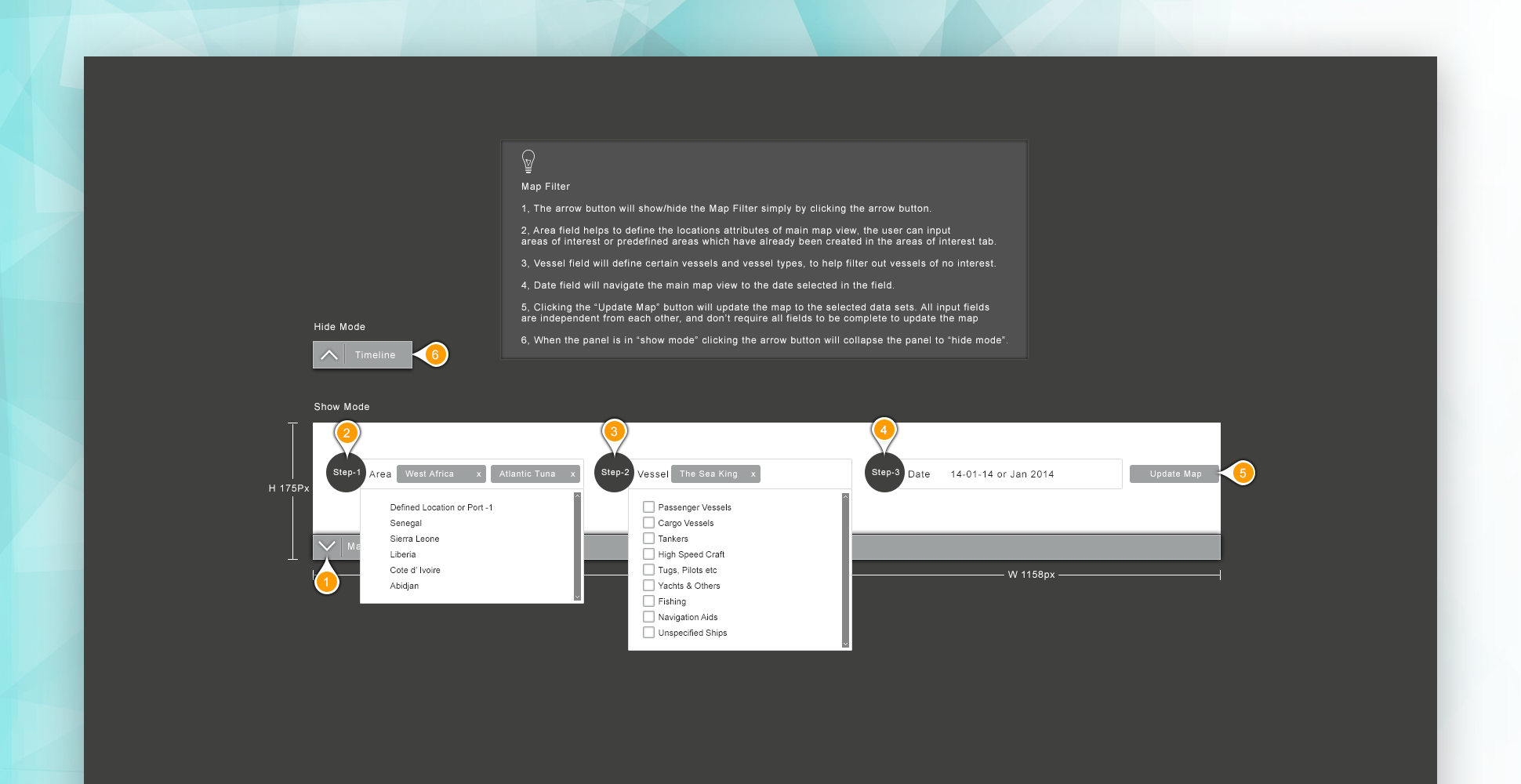
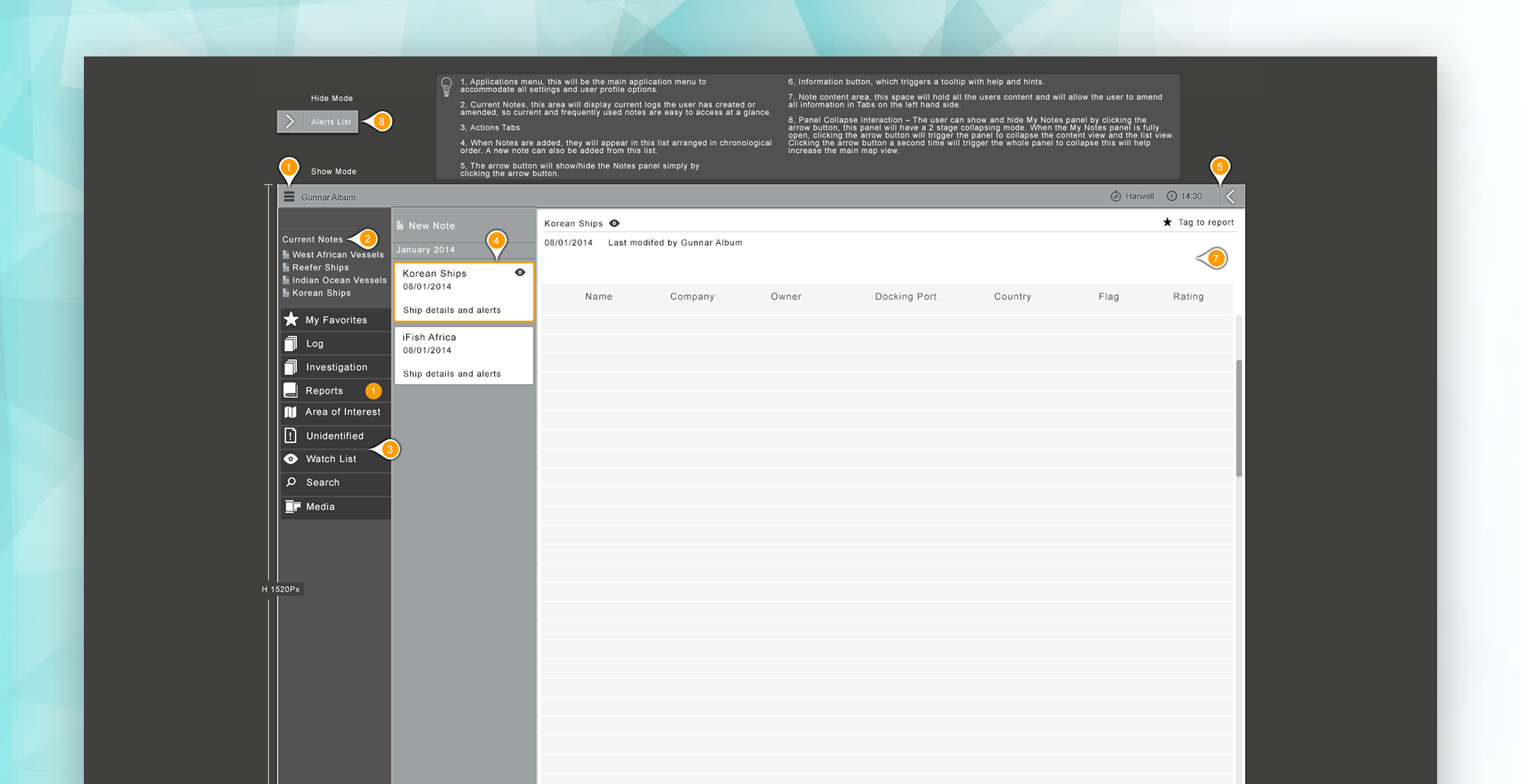
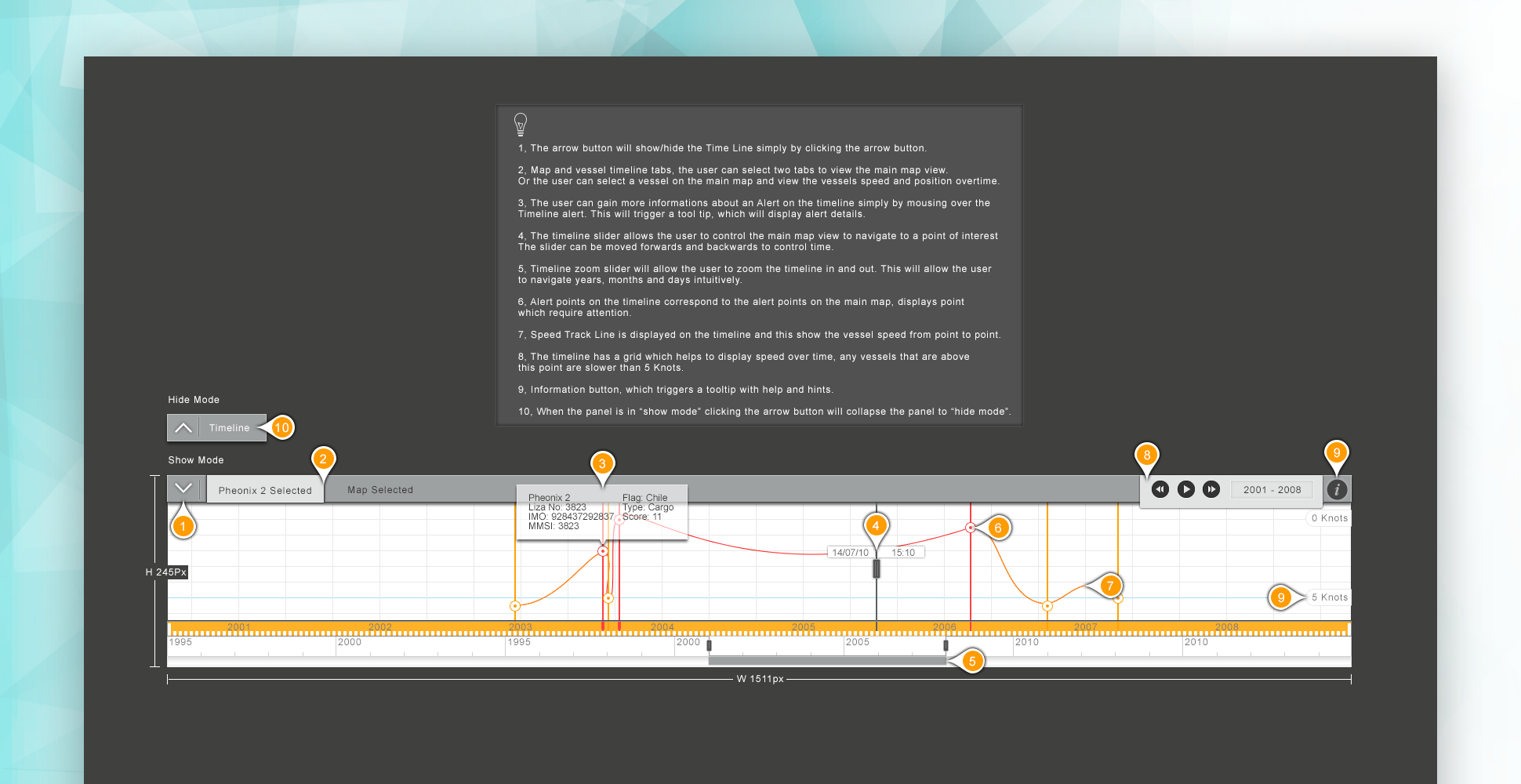
Vessel & alert icon exploration
One of the main challenges for the interface was to help identify vessels and the alerts that have been triggered. When designing the icons I started with primitive shapes and then expanded the icons to develop a level of meaning and understanding so when looking at a screen with multiple icons the user could easily identify the difference.
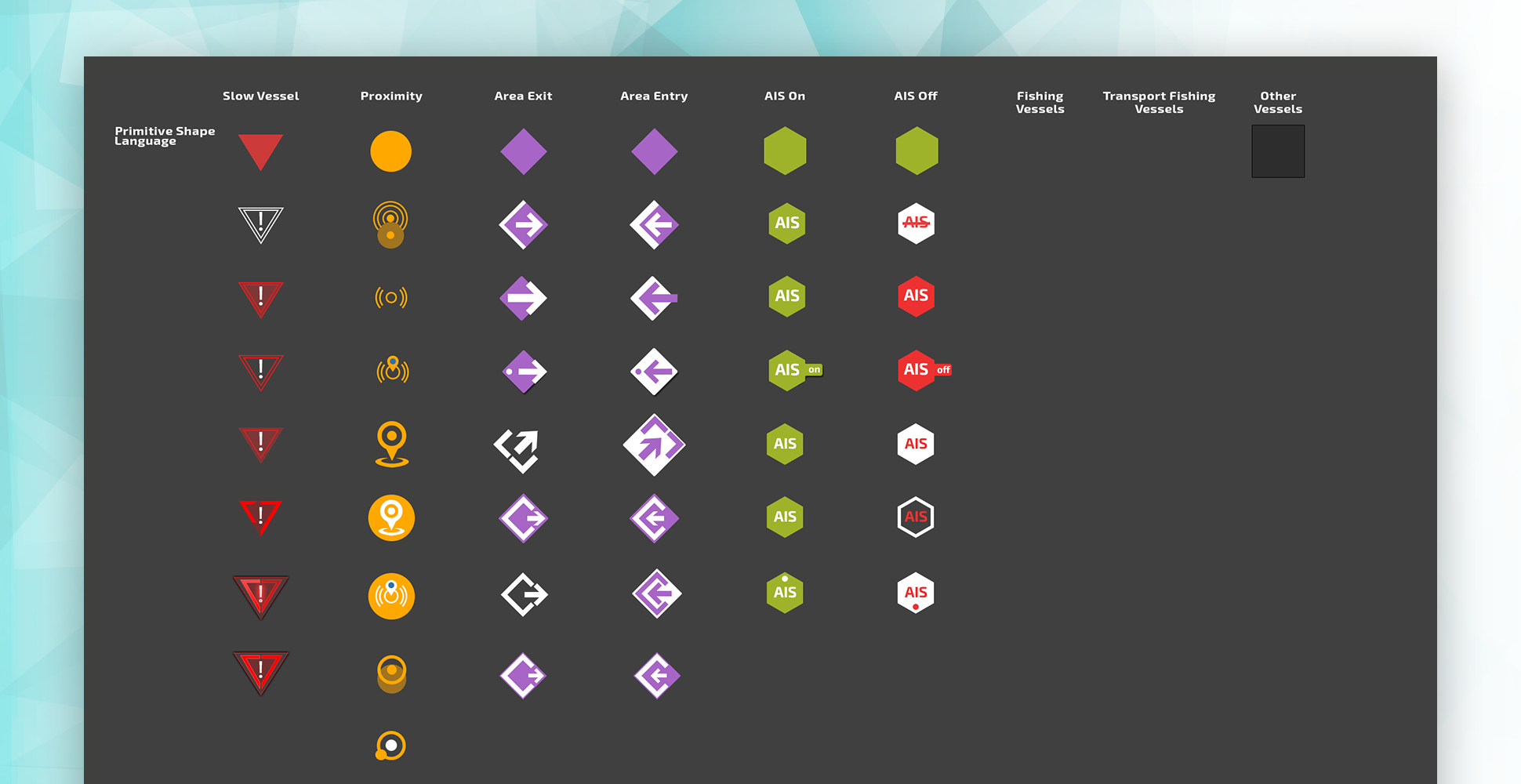
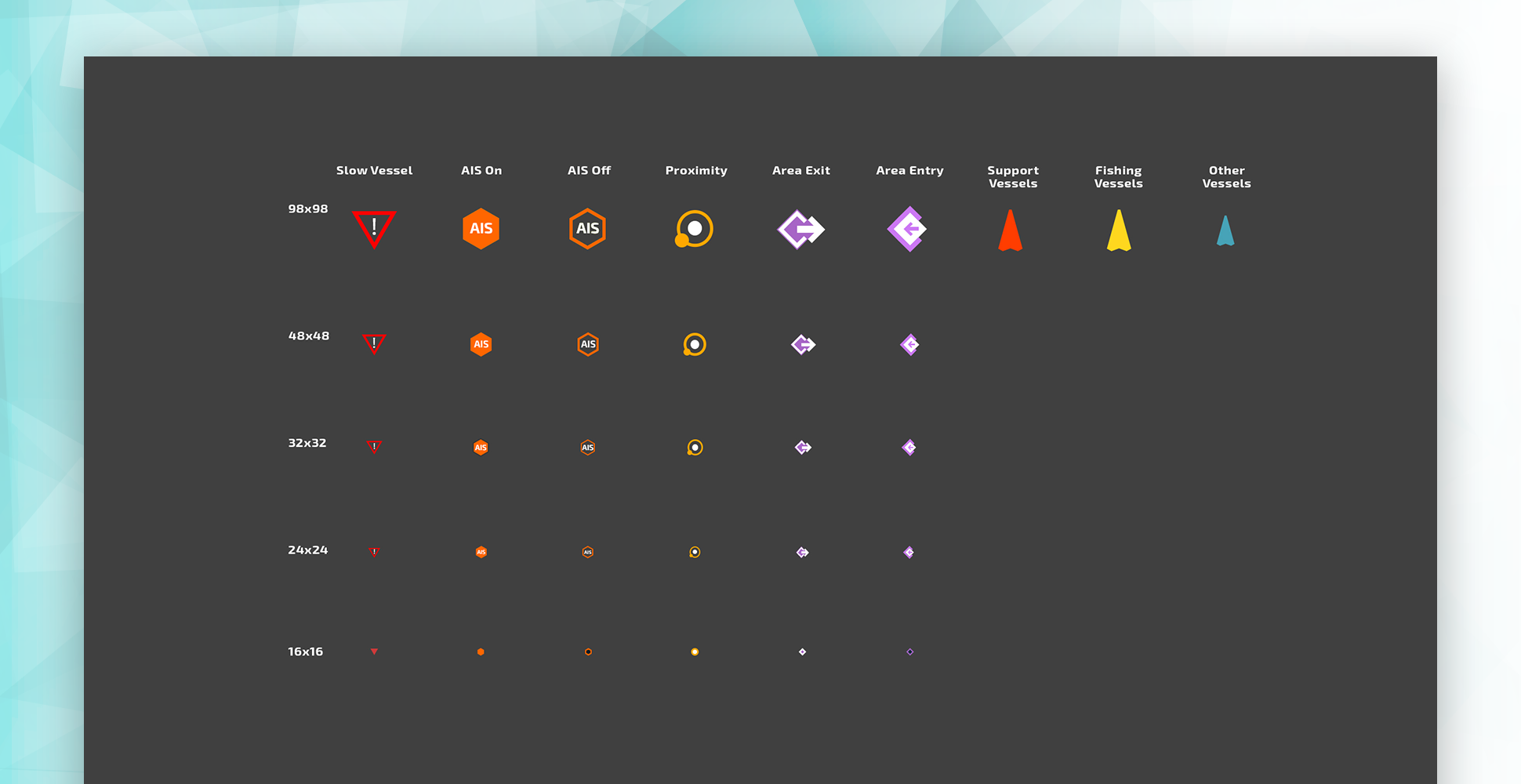
Final design
The Eyes on the Seas system is made to be a cost-effective worldwide fisheries monitoring and enforcement tool for governments all over the globe, particularly the enforcement agencies with the fewest resources, to monitor and detect unlawful fishing and associated activities.
The final design output was concise and bold in design, the information was clearly laid out and communication the data effectively. The design had to incorporate one number of features which included a scalable map, the ability to track moving vessels and alert the user of any illegal behaviour. Links to project article:BBC News & The PEW charitable trusts
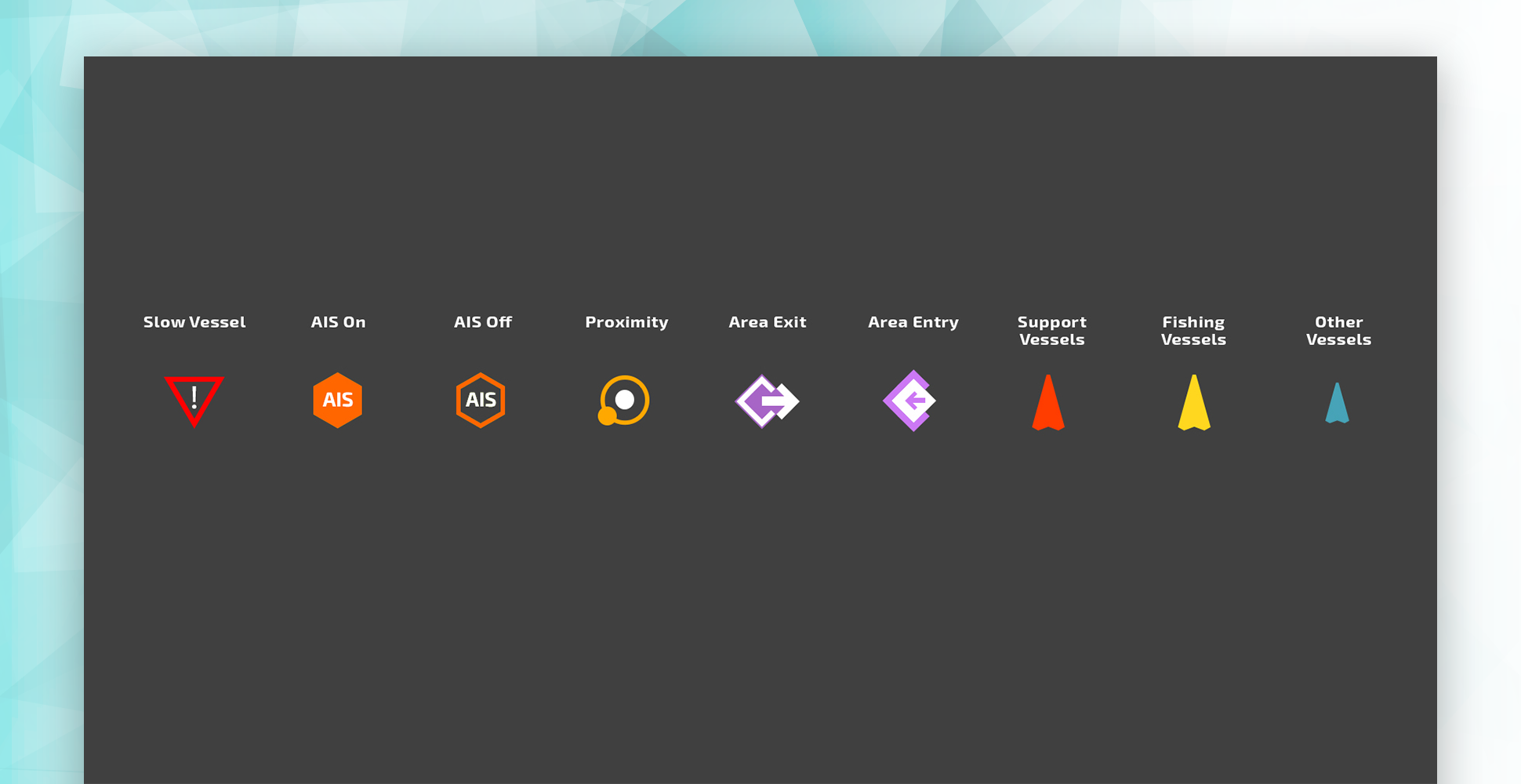
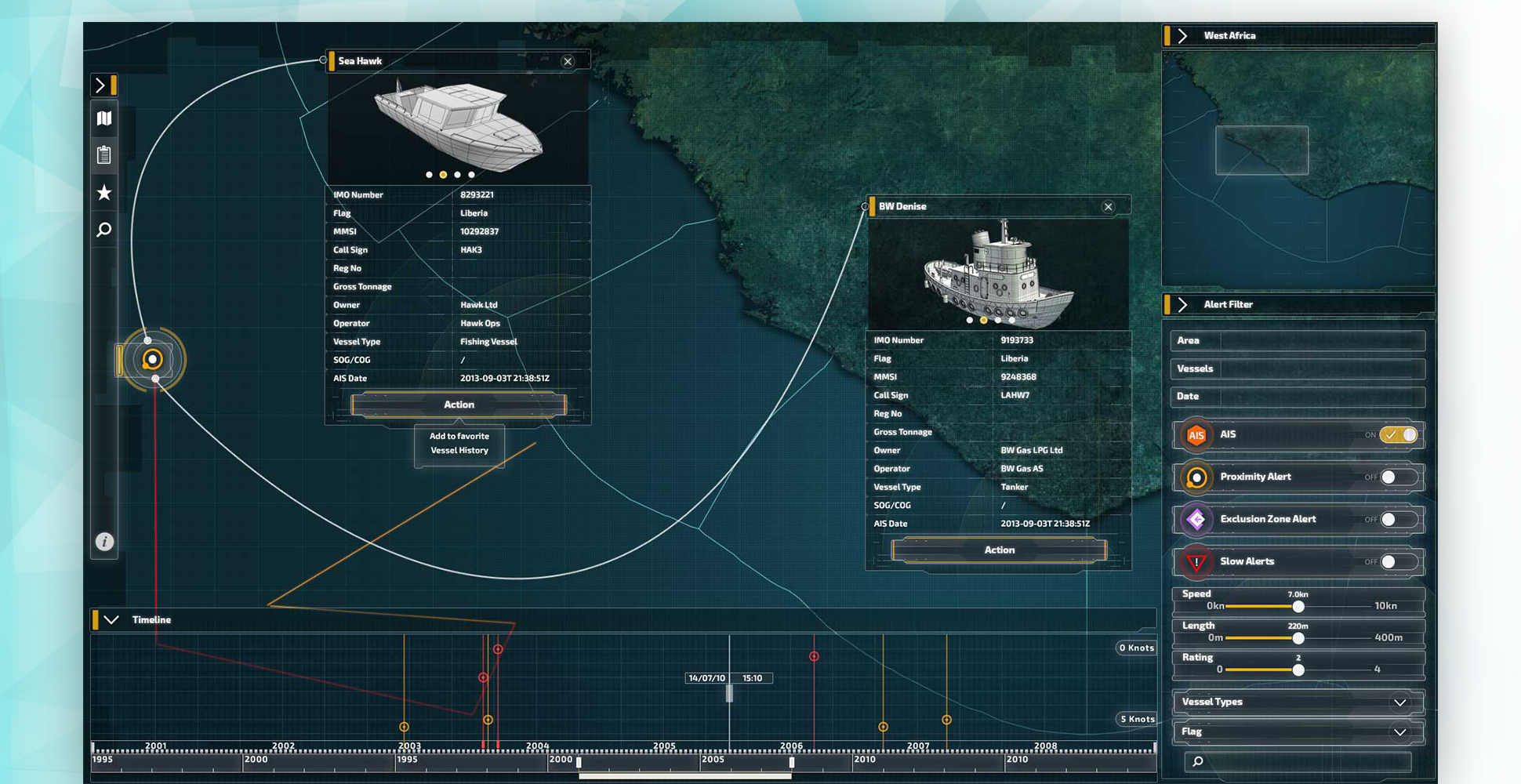
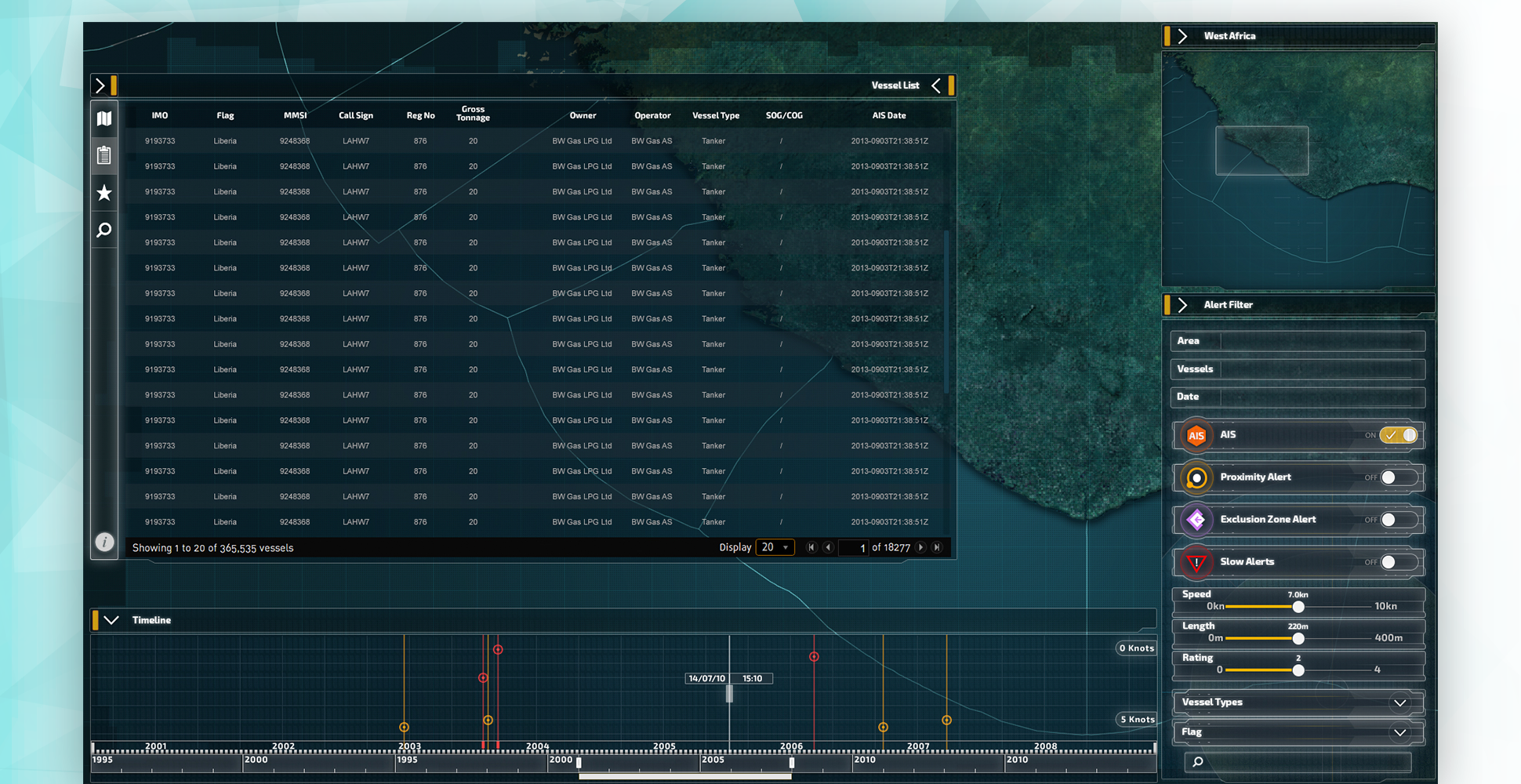
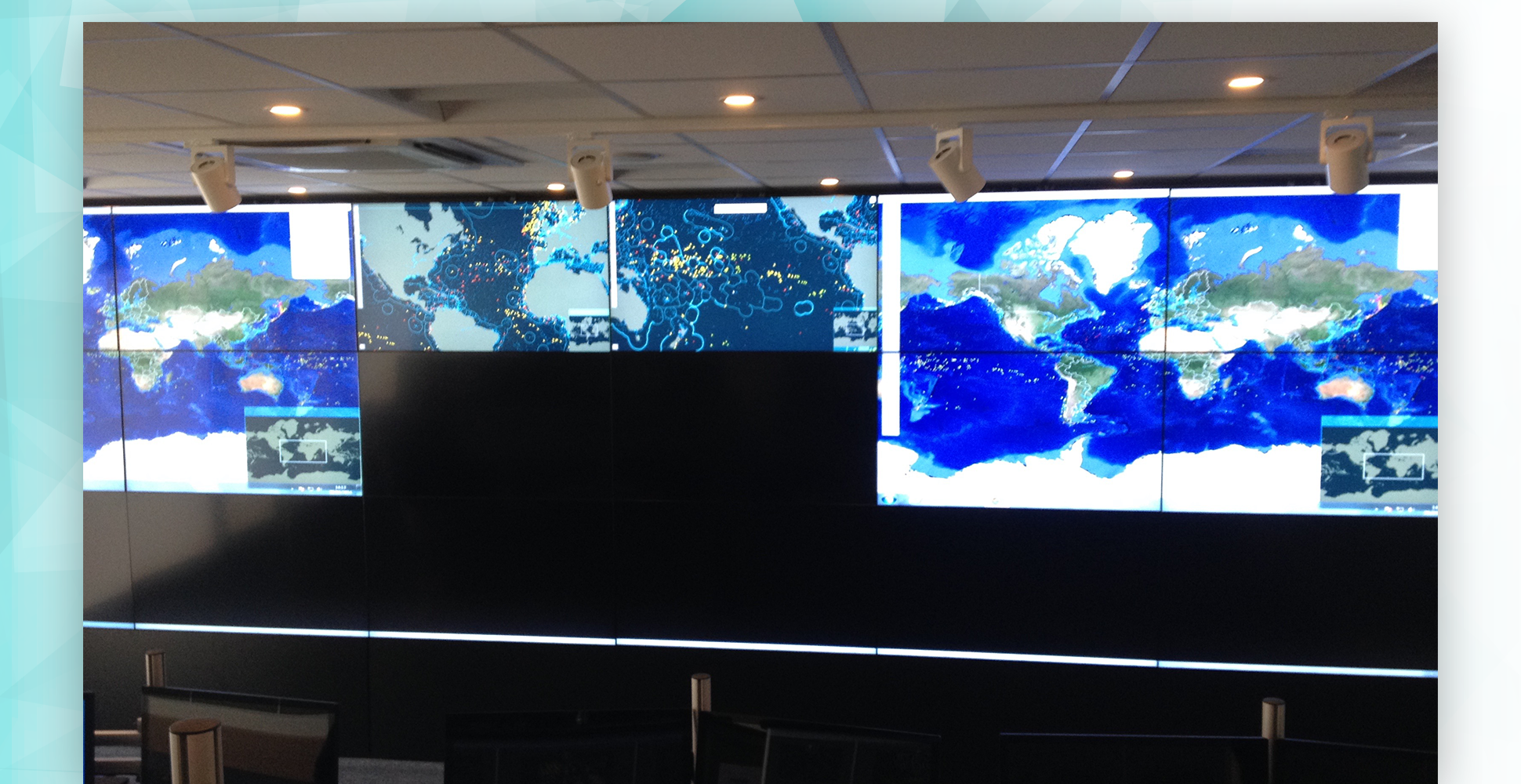
There is no single solution to the problem of illegal fishing, but Project Eyes on the Seas will detect enough large rogue vessels to make a significant difference in protecting the world’s oceans.

